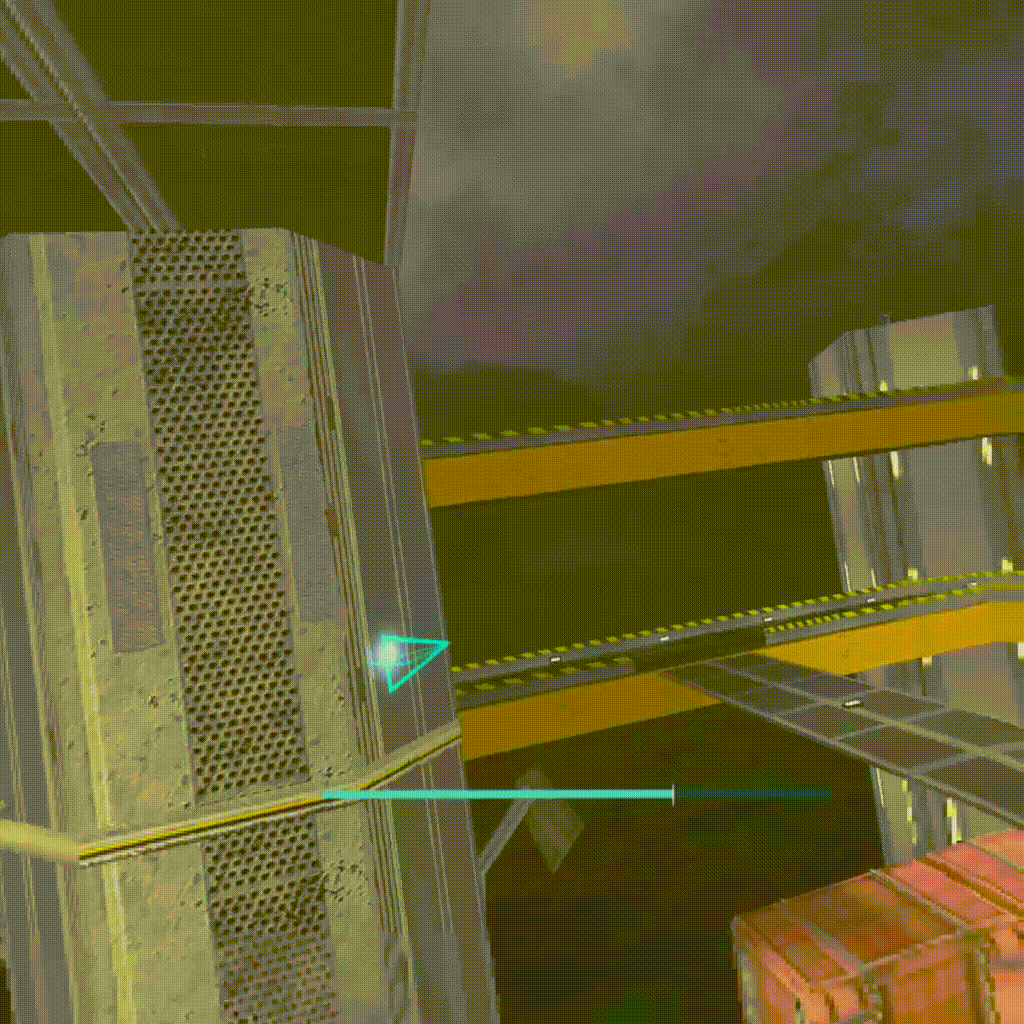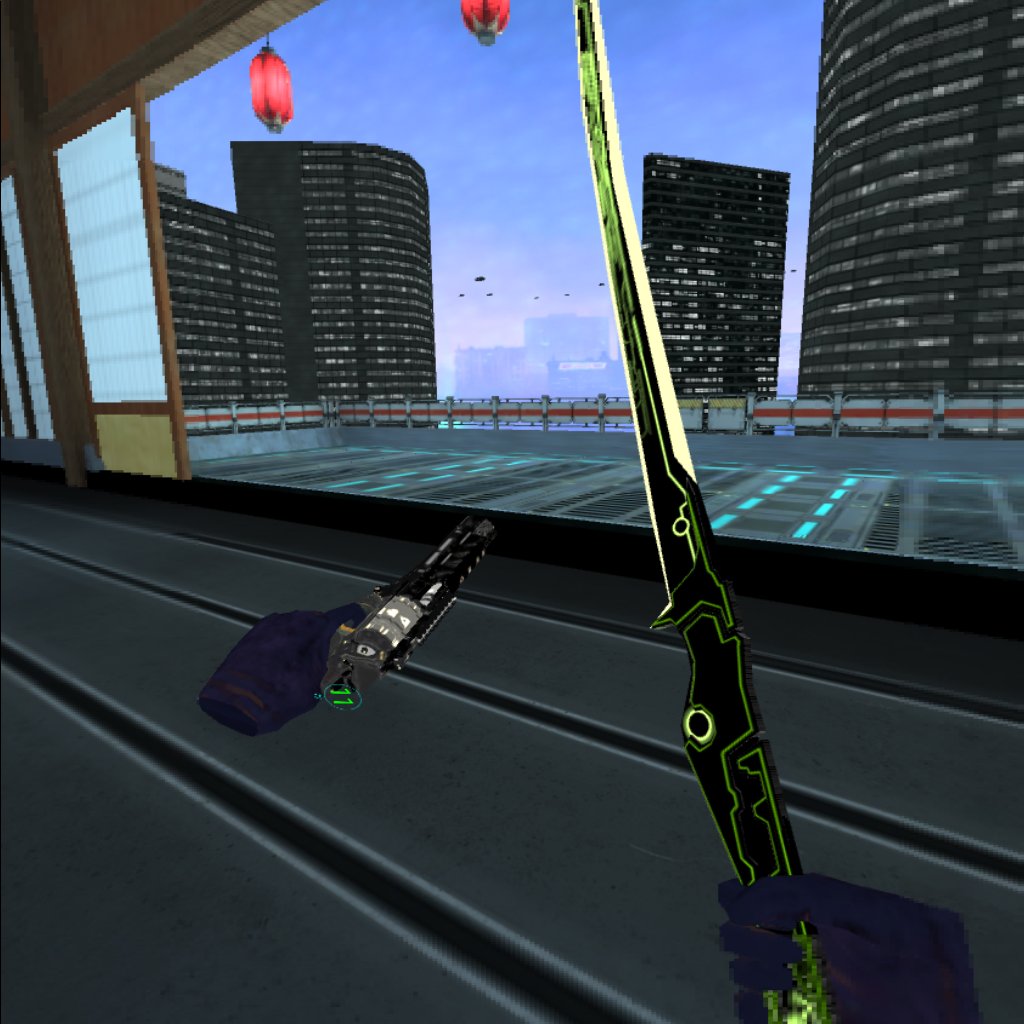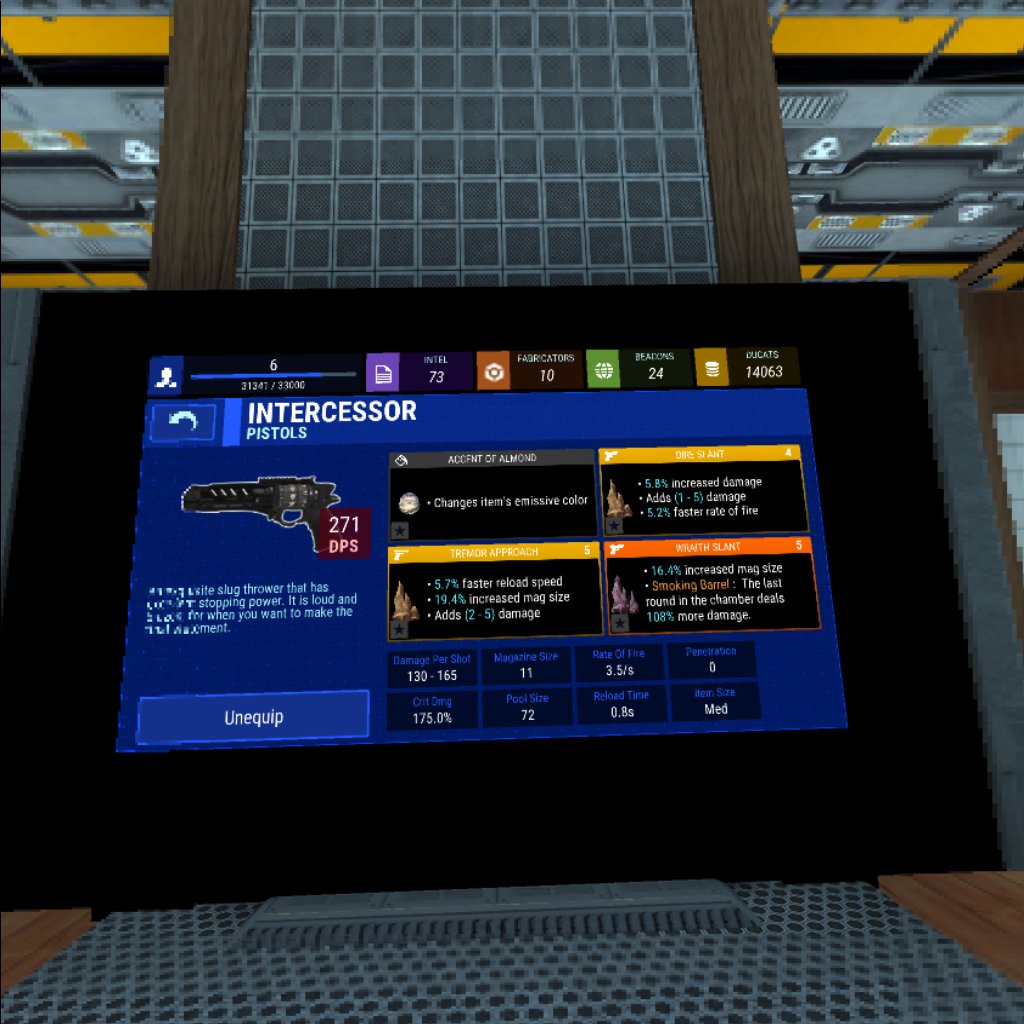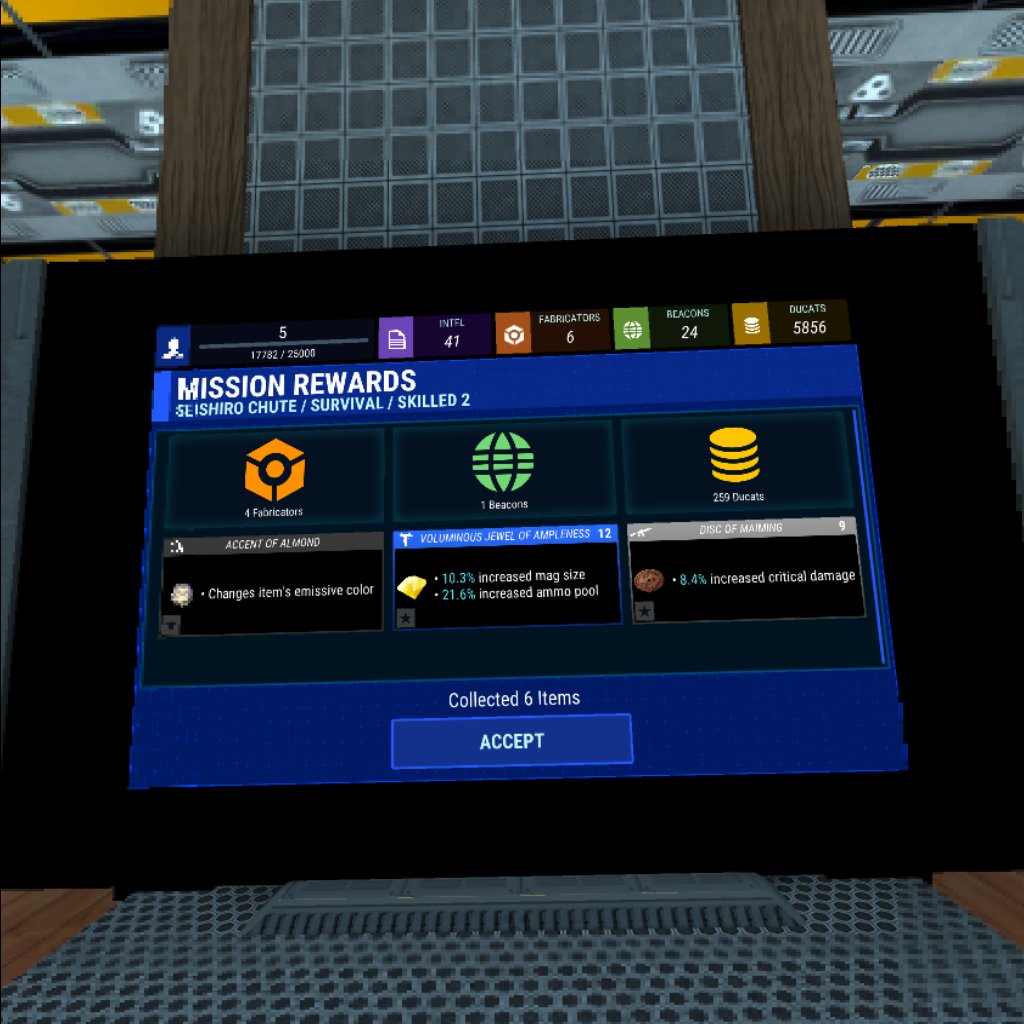If you’re familiar with the best games on Oculus Rift and HTC Vive, then you’ve no doubt heard of Sairento VR. On PC, Sairento offers fast-paced, action-packed gameplay that sees players jumping, sliding, and flipping their way through 13 locations, with their choice of a single-player campaign mode, cooperative play, and even PvP. Sairento Untethered brings the ninja action to the Oculus Quest, albeit a heavily gimped version of the experience. Still, Sairento Untethered is a blast to play without any wires, and it’s definitely a game that offers a unique experience built from the ground up for VR.
Game Name: Sairento Untethered
Platform(s): Oculus Quest
Publisher(s): Mixed Realms
Developer(s): Mixed Realms
Release Date: June 27, 2019
Price: $14.99
Sairento is a VR wave shooter similar to a lot of other VR titles like Raw Data or Robo Recall, but calling Sairento simply a wave shooter is a disservice to what the game actually has to offer. The core of Sariento‘s gameplay revolves around its unique (and vomit-inducing) locomotion system. It doesn’t hold anything back, letting you jump, double jump, slide, wall run, bounce off walls, and even perform flips midair, all while dual wielding a wide assortment of weaponry. It’s an incredibly deep system, and one that you’ll need to spend a lot of time with to truly master. Thankfully, there are ways to ease yourself into the more advanced techniques (as well as an assortment of comfort options), and you’ll be pulling off cool combos in no time.
Unlike the PC version of Sairento, Sairento Untethered lacks a single-player campaign as well as co-op and PvP. The Quest version is also missing the 13 locations from the PC version, instead opting for five brand new maps that better suit the standalone headset’s weaker processing power. Various mission types are available across these new locations, ranging from assassination to survival. While it’s undoubtedly light on content compared to other versions of the game, Sairento Untethered succeeds in bringing Sairento‘s unique gameplay ideas to the Quest without any issues. This is the full Sairento experience, just limited to fewer areas.
And that experience is solid. Sairento reminds me a lot of Devil May Cry in that you’ll be repeating the same missions in the same areas while trying to perform stylish actions and combos, fully realizing the potential of a deep moveset. The game gives you options upon options, and there are a million cool decisions you could make at any moment.
Sairento‘s pride and joy is its movement system, and that’s really what you’re buying into when you purchase the game. Getting around is simple, you can use a dash that will move you toward a highlighted location or you can use smooth locomotion. However, just walking around isn’t going to get you very far. You’re going to spend a lot of time in Sairento airborne, employing a series of jumps to get you to where you need to be. You get two jumps before you have to either land or bounce off a wall, and you can see where you’ll land thanks to an arc that comes out of your controller.
Jumping is just the start of things. Midair, you can bounce off walls to gain another jump, or you can hit a wall at a certain angle to automatically run across it. Crouching as you land will let you slide. The coolest thing you can do in the air, though, is a flip, which can be activated by putting both arms in the air. Time will slow down mid-flip and you can pull off some awesome shots this way. I wouldn’t recommend trying it unless you’ve got your VR legs, because it even got me feeling a little uneasy, and I spend a lot of time in VR. Getting around in Sairento is a blast, and you’ll have to use every tool in your arsenal to avoid incoming damage, especially on higher difficulties.
Of course, just moving around isn’t going to defeat your enemies, and that’s where Sairento‘s assortment of firearms and ninja weaponry come into play. Multiple pistols, submachine guns, rifles, and shotguns are available from the get-go, alongside a few swords and ranged ninja weapons like bows and kunai. You can have five weapons on your person at the same time: one on each hip, one on each shoulder, and one on the lower back. Except for the bow, any weapon is fair game for dual-wielding. Want to use a shotgun and a revolver? Go for it. A sword and an assault rifle? Sure thing. Options are paramount in Sairento, and it puts as little between you and cool stuff as possible.
The shooting itself is serviceable, but could use some improvements. Long guns like assault rifles and shotguns can’t be held with two hands, much to my disappointment. Also, the angle of the gun barrels feels slightly off with the Oculus Touch controllers, which took some getting used to, but isn’t much of an issue overall thanks to the game’s bullet time mechanic. While the guns are fine on their own, the ninja weapons are infinitely more satisfying to use.
The bow is hands down the best weapon in the game, and nailing enemies with it in the air always felt cool. At first, I ran into some issues aiming because one of my hands would leave the Quest’s sight and lose tracking when I drew back the string, but a quick change in the settings let me aim with my other hand instead (again, the breadth of options in this game is staggering). Kunai are very fun to use once you get used to the throwing angle. The glaive allows you to call it back after you throw it, resulting in some cool kills that gave me flashbacks to the Leviathan Axe from God of War.
The melee combat, however, is a massive letdown. The swords are all well-designed and cool to hold, but actually putting them to use was lackluster. If you’re looking for awesome melee combat with weight, keep looking elsewhere. Sairento‘s sword combat allows for the same waggle combat as games like Skyrim VR. Actually engaging a sword-wielding enemy in a melee duel won’t happen in Sairento, but you can still do some really cool stuff with swords. Sliding into weaker enemies with an extended sword to slice in them in two is awesome, and chopping an unaware enemy from above was always fun. For quick one-and-done instakills, swords are great. For just about anything else, though, you’re probably better off with another weapon.
The missions in Sairento are your standard shooter fare, with each tasking you with taking down a certain number of enemies or surviving a certain amount of time. There’s very little variety when it comes to actual objectives, but the varied gameplay outweighs the monotonous mission structure. Sairento‘s missions also suffer from a lack of enemy variety. Throughout the entire game, you’ll encounter the same handful of enemy types, each with their own predetermined attack patterns, and the AI isn’t spectacular either. They mostly just run straight at you. On higher difficulties though, they’ll begin to pose an actual threat, especially when you have to simultaneously deal with ranged and melee enemies. If objectives aren’t your thing, you can always hop into endless mode, which is available on each of the game’s five maps. Even though these missions can get repetitive, you are rewarded for powering through them.
Sairento is a loot-based game, and pretty much everything you do will reward you with mods for your weapons and armor that provide you with stat bonuses like increased damage or fire rate. The overwhelming majority of the loot is worthless. The rarer drops, however, are where things get interesting. They can dramatically alter how a weapon performs. Some of my favorite rare drops include a revolver mod that makes the final shot before reloading do a huge amount of damage and a mod for the kunai that lets me throw three at once in a fan formation instead of just one. The loot does add some longevity to the experience, but only the best of the best drops are going to make a significant difference to your playstyle.
There are ways to increase your chances when it comes to loot. Completing an operation, a list of three randomly assigned missions, will reward you with a resource cache, which contains a bunch of different currencies that can be used to craft new mods, increase mission difficulty, etc. Completing challenges, which are simple tasks like “kill 3 enemies during one slide” or “kill 40 enemies with kunai,” will net you a strongbox, a loot box filled with a random assortment of gear, and strongboxes are rewarded upon leveling up as well. Operations and challenges can be rerolled for a small fee of in-game currency, which helps if you get a list of challenges for weapons you don’t like or get a series of missions you’d rather not play. Higher difficulties and mission modifiers, which can be activated with an in-game currency called “beacons,” beget better loot too. Loot is the backbone of Sairento‘s progression, but it’s not the only part of it.
Each weapon type has a skill tree that can unlock various upgrades and abilities for the corresponding weapons. Skill points are earned each time you level up, and the upgrades offered really do make a tangible difference in gameplay. Swords, for example, can unlock a ranged blade beam attack that makes them more versatile. Each weapon type has two paths with different priorities (one track may focus on raw damage while the other focuses on critical hits, for example), and neither track ever felt like it was the obvious choice over the other. Once you acquire each ability in a skill tree, points can be spent indefinitely for slight bonuses to stats like damage. There’s always something to work towards in Sairento, which helps it to remain engaging longer than other VR shooters normally do, but the majority of the rewards don’t feel too rewarding.
In order to run on the Oculus Quest, Sairento had to retune its graphics to work on the weaker hardware, but the graphical downgrade is a bit too extreme. Compared to its PC counterpart and even a good number of other Quest titles, the game is downright ugly, featuring muddy textures and poorly detailed character models. It also makes heavy use of foveated rendering, a common technique for Quest games, but anything outside of your direct field of view gets pretty pixelated. Also, text is difficult to read, which is frustrating in a game with a lot of mod and upgrade descriptions. Fortunately, the game runs smoothly, and graphics are the last thing you’ll think about while doing backflips with dual katanas, but if you stop and look around, you’ll really notice how bad everything looks.
Sairento is a game with a great foundation. It’s locomotion system is unlike anything else, and it’s one of the deeper games available for VR. In the transition to Oculus Quest, Sairento loses a lot of what makes the PC version so great, retaining only the bare minimum of what makes the game work. Still, that bare minimum is a whole lot of fun, and Sairento Untethered is totally worth the asking price. Even though its loot system might not be the most rewarding thing, the core gameplay loop is addicting enough, and leveling skill trees and mastering midair combat is sure to provide hours of fun. The limited amount of content hurts the experience overall, but there’s still plenty of variety thanks to the game’s vast arsenal and complex mechanics. The classic Sairento gameplay is there, but everything else is not.
Review Disclosure Statement: Sairento Untethered was provided to us by Mixed Realms for review purposes. For more information on how we review video games and other media/technology, please go review our Review Guideline/Scoring Policy for more info.
Summary
Sairento Untethered is a nice bite-sized version of the critically-acclaimed PCVR shooter. It’s very light on content, only having five maps, but the complex movement system and vast and varied arsenal of weapons create a very high skill ceiling that will definitely keep players coming back for more. Progression and loot are disappointing overall, but mastering the locomotion mechanics provides a sense of accomplishment that few games can. Despite a substantial graphical downgrade and having only a handful of levels, Sairento‘s gameplay is enough to merit a few hours of fun.
Pros
- High skill ceiling
- Deep movement system
- Huge array of varied weapons
Cons
- Only five maps
- Noticeable graphical downgrade
- Disappointing loot
- Repetitive missions







